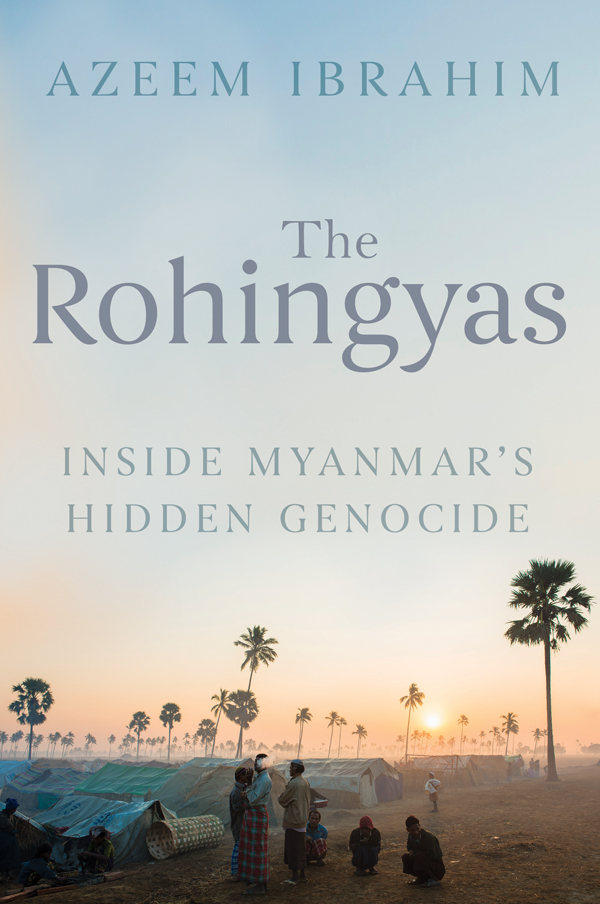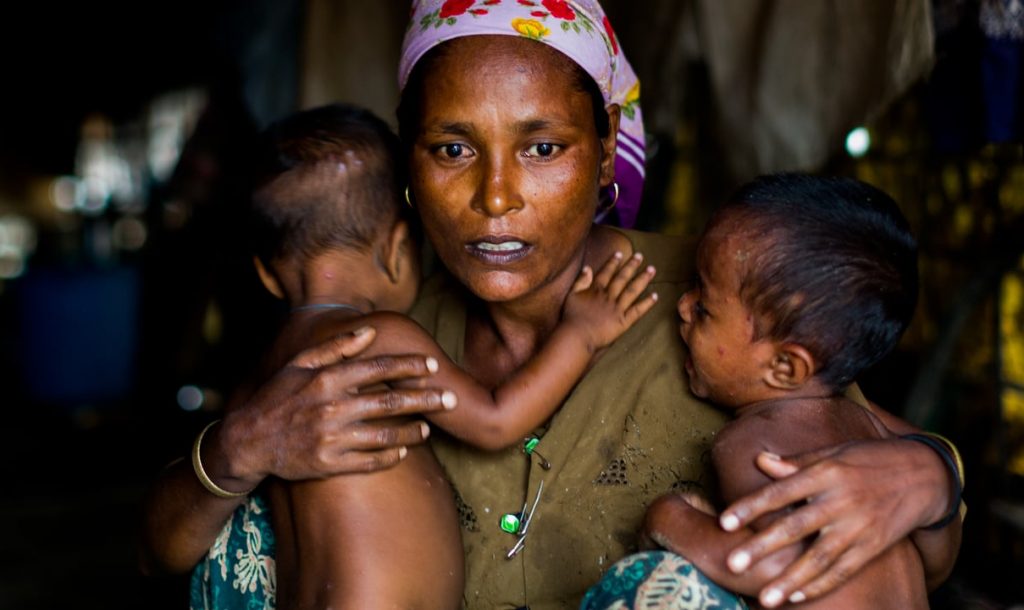
The Rohingyas: Inside Myanmar’s Hidden Genocide (Azeem Ibrahim, Hurst and Company, London 2016)
Newborn babies crushed under the weight of a soldier’s heavy boot. Children having their throats slit as they try to protect their mothers from rape by security forces. Women and girls facing rape or sexual assault and humiliation. The elderly and infirm burnt alive in their homes. 1,000 killed and another 75,000 displaced to Bangladesh. These atrocities were documented in a disturbing February 2017 United Nations report which concluded that they are ‘very likely to amount to crimes against humanity. More recently, UN Special Rapporteur on Human Rights Yanghee Lee has named them ‘definite crimes against humanity’.
The most recent reports have not emerged in a vacuum. In 2015, the Yale Law School found ‘strong evidence of genocide against the Rohingya’. The same year, the International State Crime Initiative from the School of Law at Queen Mary University of London concluded that genocide was taking place in Myanmar. In 2013, Human Rights Watch identified crimes against the Rohingya which it argued amounted to ethnic cleansing.
The government of Myanmar has denied this charge. U Win Htein, a senior member of Aung San Suu Kyi’s now more than one year old National League for Democracy (NLD) government, rejects claims of crimes against humanity, and says this is an internal affair that has been exaggerated. This rhetoric is eerily close to that of the previous governments that the NLD vowed departure from.
Certainly, this is not a popular concern domestically. The Rohingya are not recognised in Myanmar, and are instead called Bengali. Their history in Rakhine State and rights to citizenship are heated issues of contention. While the NLD has appointed several commissions to investigate the situation in Rakhine State, they are lacking either the mandate or capacity to deal with the situation that has arisen since October 2016.
Given this, there is a need for an accessible publication which brings together the complex history and discussion of the increasingly brutal persecution of the Rohingya in Myanmar today. Unfortunately, Azeem Ibrahim’s The Rohingyas: Inside Myanmar’s Hidden Genocide is not that book. Instead it is hastily written and poorly considered, offering an inaccurate rehashing of history, no new arguments and a failure to engage with current debates.
A large section of the book summarises convenient arguments from the contentious debate over the origins of the Muslim community in Rakhine State and the Rohingya ethnic label, despite recognising that the discussion is peripheral. There are numerous factual errors throughout not just this section but the whole book, such as the claim that most rulers of the Arakanese Mrauk U dynasty were Muslim (p. 24). There are other claims which would be significant if any evidence was provided. Rather, unreferenced passages assert that the 1784 Burmese invasion of Arakan was ‘in part as there were so many Muslims in Arakan’ (p. 65); and that the British never used the term ‘Rohingya’ in their records because the administration was in the habit of categorising the population by religion, not ethnicity (p. 31) — the latter simply an untenable statement. Errors such as these are surprising, given the author’s extensive academic qualifications.
There is little discussion of genocide before the reader arrives at the chapter devoted to the topic. Here, we find that the book is not actually arguing that there is genocide underway, but that the Rohingya are ‘on the brink of genocide’ (p. 99).
While invoking the term genocide is sure to attract interest, the discussion is lacking in depth. The 2015 Yale Law School report noted, significantly, that it was difficult to establish intent for genocide on the part of the Myanmar state. However, this book does not engage with this report or the question of intent, despite it being crucial to any allegation of genocide. Instead, outcome appears to be equated with intent. The overwhelming focus on the crime of genocide could perhaps have been substituted with a discussion of other crimes against humanity in relation to the Rohingya, as noted by the UN and others.
One of the most striking flaws of the book is its failure to consider Rakhine perspectives. This is reflected not only in the considerable confusion and misinformation about contemporary Rakhine political parties (p. 121). The author appears to have spent very little time in either Rakhine State or Yangon, and not to have consulted the Rakhine communities who have long lived alongside the Rohingya. In a chapter devoted to solutions there is little mention of the Rakhine, despite the fact that any resolution must include both communities. Instead, solutions offered refer primarily to international pressure, reflecting the publication’s target audience.
In this respect, the book makes an important point about the failure of the international community to address this issue. Western governments’ vision of what is occurring in Myanmar has been blurred by their ‘indulgence’ of Aung San Suu Kyi and the NLD, the book argues (p. 133). There is a reluctance to pressure her government, which was hailed in the US as a foreign policy success of the Obama administration. Ibrahim pushes back both against the argument that Aung San Suu Kyi is doing her best as well as claims that the plight of the Rohingya is a hiccup to be expected during a difficult transition from military rule to democracy. The book rightly notes that such a perspective flies in the face of evidence that Aung San Suu Kyi has proved herself unwilling to show leadership and to prioritise the Rohingya issue — and that ultimately she must hold responsibility.
Therefore, the book argues, international pressure is going to be crucial for the Rohingya. We are told via a ‘Media Pack’ on Ibrahim’s website that he has an address book to rival a Prime Minister’s. If the book serves to bring attention to this desperate situation, then it may redeem itself somewhat.
……………
James T Davies is a PhD candidate researching Myanmar at UNSW Canberra at the Australian Defence Force Academy.
Photograph: Erin Harper, under Creative Commons licence.
 Facebook
Facebook  Twitter
Twitter  Soundcloud
Soundcloud  Youtube
Youtube  Rss
Rss 